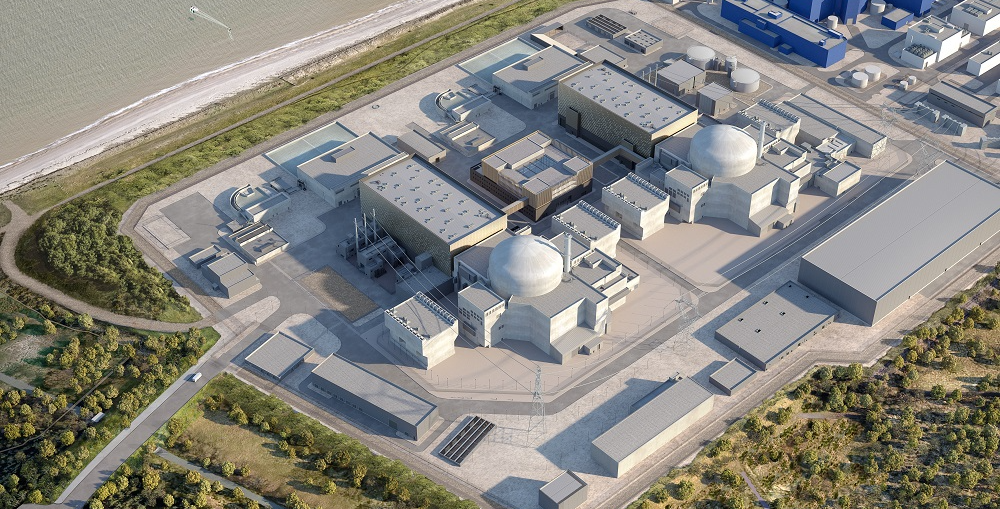Proximo Weekly: What ETMs can and can’t do for coal retirements
The recent ACEN ETM to retire the South Luzon coal-fired plant early attracted some controversy over its use of the ETM moniker. But the deal is more promising than was first apparent, although it may still struggle to influence transition finance outside its home market.

The evolving science of coal plant retirement financing has had a busy couple of weeks. On 14 November, the Asian Development Bank signed a memorandum of understanding with Cirebon Electric Power, the project company for unit 1 of the 1,660MW Cirebon coal-fired plant, its offtaker, Indonesia’s national utility PLN, and the Indonesian Investment Authority. The MOU covered a potential early retirement of the plant using the ADB’s Energy Transition Mechanism (ETM).
The day after, on the sidelines of the same G20 summit where the Cirebon MOU was signed, the US, Indonesia and a raft of other developed countries launched the Just Energy Transition Partnership (JETP), a $20 billion combination of grants, concessional loans, commercial loans, guarantees, and private investment. The programme will cover a big expansion in renewables, and the retirement of coal capacity whose emissions cannot be rebated.
But aside from the summit-friendly but content-light announcements, there was further progress on the first coal retirement financing in Asia. On 7 November, Philippines power producer ACEN Renewables said it had closed its first ETM financing with the sale to a group of institutional buyers of South Luzon Thermal Energy Corporation (SLTEC), the project company for a 244MW coal plant.
The deal and its structure have proved a little controversial, including on these pages. While the ADB has been consulted regarding the deal, and has commented approvingly on it, the ACEN ETM is not an “official” ETM, despite being the first use of the structure in the region. And the ACEN deal is very much a product of its home market, and might not apply elsewhere in Asia-Pacific.
ACEN’s off-ramp
ACEN is listed on the Manilla stock exchange, and is neither a large national utility nor a multinational independent power producer, the two main targets for the ETM process. Selling South Luzon was key to getting ACEN accepted as a mainstream option for ESG-focused investors. It started talking to five or six potential buyers in late 2020 and early 2021, after setting itself a deadline of 2030 for the divestment.
But buyers who planned to keep running the plant were not offering especially attractive valuations or requiring ACEN to step in as offtaker when the plant’s existing offtake agreement, which ends in 2029. The Ukraine conflict and dislocations in global financial and commodities markets widened the potential discounts.
And according to Marty Syquia, ACEN’s deputy CFO, it was also important to those investors that ACEN be seen to divest that coal capacity to a buyer that planned on retiring it. So on 18 October 2021 it shifted to a process that included a retirement element. Step one was re-leveraging the plant, a process that was complete in April, with Bank of Philippine Islands and Rizal Commercial Banking as lenders.
Increasing capital stack
That process increased the debt on the plant from about PHP10 billion ($175 million) to about PHP13.7 billion, allowing ACEN to take a dividend out - and reinvest it in its renewables portfolio. ACEN’s next task was to find PHP3.7 billion in equity commitments for the portfolio, and eventually turned to local financial institutions.
In July, it lined up a PHP1 billion preferred equity commitment from the Insular Life Assurance Company, the Philippines’ oldest, and fourth-largest, insurance company. Then just before close the Philippines’ Government Service Insurance System came in for another PHP2.2 billion. Those two commitments allowed ACEN to redeem the preferred equity it held in the project company.
The remainder of the equity, most of it in the form of common equity rather than preferred equity, came from an entity called ETM Philippines Holdings, which was formed by BPI Asset Management and Trust Corporation to gather equity commitments from smaller investors (on average tickets of between PHP10 million and PHP25 million each).
ACEN’s involvement in the plant is not over. It continues to be the plant’s operator, reflecting the fact that the buyers likely lack the capacity to run it themselves, and that ACEN has a continuing obligation to the plant’s employees. With social factors now starting to rival environmental factors in prominence for ESG, equitable treatment of workers during the transition is becoming a key consideration. The retirement of the plant by 2040 is effected through a call option that ACEN holds on the equity in SLTEC.
That 2040 retirement date is about 15 years ahead of the end of the plant’s useful life, though perhaps further away than some NGOs might prefer. But it still presents some challenges. One response to higher interest rates can be to look to extend a financing’s tenor, or ask lenders to take on a larger bullet and this view of a plant’s remaining life. An ETM structure provides no such cushion.
Onwards and upwards for the ETM
ACEN has 18 years to look for alternative uses for the South Luzon site, as well as explore ways of bringing forward that retirement date. The shareholders in South Luzon, which may need to fund the retirement of other coal units in the Philippines, will be looking to recycle their commitments.
So far international institutions and philanthropies have yet to show any enthusiasm for ETM - at least in a Philippine context. Whether that is the intricacies of the domestic power market, or the peso’s poor performance since May 2021 has yet to be seen. ACEN has been lucky that its domestic financial sector is so comfortable with energy market risk. Outside Thailand and Malaysia, that is unlikely to be the case elsewhere in Asia, and particularly in Indonesia.
But there are some doubts about whether the international commercial banks that are most enthusiastic about decarbonisation have the human and balance sheet capacity to support further ETMs. The seven banks in the Glasgow Financial Alliance for Net Zero Private Sector Finance Working Group and their Proximo Playbook project finance lending rankings for 2019 to the present are Bank of America (28), Citi (24), HSBC (11), Macquarie (170), MUFG (3), and Standard Chartered (17).
Just looking at project finance lending volumes may be a little unfair to those banks lower down the ranking, since many of them mobilise institutional debt and equity rather than just their balance sheet for energy and infrastructure financings, and may have the ear of sponsors and governments through their corporate lending activities. So any low-ranked GFANZ banks may be as, or even more willing to accept the messy compromises involved in retiring coal than higher-placed institutions.
Besides a supportive domestic financial sector there is also the Philippines’ power market to consider. International power producers have a relatively minor presence compared to local conglomerates on the generation side, while distribution companies are a mixture of private entities and cooperatives, and transmission is still in public hands. But a functioning spot market exists alongside bilateral PPAs, unlike elsewhere in the region.
SLTEC’s offtaker Meralco did not need to be a part of the ETM process, since its PPA expires long before the expected retirement date. It is unlikely that, say, Indonesia’s PLN will be peripheral to the Cirebon 1 ETM discussion, or the wider operation of the $20 billion JETP. So the ACEN ETM is probably more promising than was first apparent, but may still struggle to influence transition finance outside its home market.
Selected news articles from Proximo last week
NORTH AMERICA
Trumbull CCGT project financing signed
Clean Energy Future (CEF) has signed the debt backing the $1.3 billion 950MW Trumbull CCGT project in Lordstown, Ohio.
EUROPE
Floating offshore wind project planned for off Cadiz
IberBlue Wind has submitted plans to develop a 990MW floating offshore wind farm 25-40km off the coasts of Cadiz and Malaga, Spain.
ASIA-PACIFIC
Masdar to develop 100MW solar project in Turkmenistan
Masdar has signed a joint development agreement (JDA) with state-owned Turkmenenergo State Power Corporation to develop a 100MW solar project in Turkmenistan.
MIDDLE EAST & AFRICA
Qatar’s first sewage treatment PPP progressing
Financing of the $730 million 150,000-cubic-metres-per-day Al Wakrah and Al Wukair sewage treatment project in Qatar is expected to close in December or January.
SOUTH AMERICA
Final stage of Rodoanel out to auction in January
Sao Paulo governor Rodrigo Garcia presented the bidding proposal for the BRL3.4 billion ($630 million) north section of the Rodoanel Mario Covas Sao Paulo ring road project to investors in New York last week.
Subscribe to Proximo
Become a Proximo Subscriber for all your energy, infrastructure and project finance data, news and event needs.
Find out more by visiting www.proximoinfra.com/subscribe today





